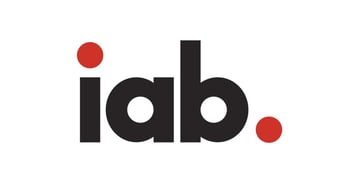Converging Industry Trends Usher in Era of Supply-Side Ad Targeting
Published by Amit Nigam on
In the mid 1990’s, the advent of programmatic advertising technology ushered in a new era of efficiency for the way media is bought and sold. The introduction of real-time bidding in 2010 built on this progress, and over time, the influx of audience and contextual targeting data in the ecosystem has supercharged these efficiencies. Programmatic has since grown to become a highly-effective vehicle for advertising performance and inventory yield optimization.
Recently, however, the manner in which audience and contextual data are used in the programmatic ecosystem for ad targeting has changed – gradually shifting towards the supply-side of the value chain.
How We Got Here
Historically in programmatic, media buyers have tapped into droves of data living within data management platforms (DMPs), then appended relevant target segments to their demand-side platform (DSP) of choice for campaign execution. While many advertisers still operate this way, a series of converging trends have ushered in a new flavor of data-enabled programmatic media buying: supply-side ad targeting.
Unlike the traditional way of using data in programmatic, supply-side ad targeting involves layering audience and contextual segments directly on top of publisher(s) inventory via a supply-side platform (SSP). This type of targeting effectively shifts the application of data and curation of inventory closer to the seller, resulting in greater efficiencies and data fidelity (via higher match rates) that help to increase campaign scale for buyers.
What’s Behind The Shift
In short, three converging trends are driving the shift to supply-side ad targeting:
1) Growth in CTV & OTT.
It’s obvious to everyone in advertising that connected TV (CTV) is growing. A recent eMarketer report reveals that U.S. adults will spend nearly two hours per day with CTV this year. Advertisers and media owners are following this viewership closely; ad spend on CTV is set to eclipse $25 billion in the U.S. this year, while content owners continue to expand their distribution across AVOD and FAST platforms.
Unlike digital display and even online video, however, CTV is a supply-constrained market, concentrated to a handful of media giants and several dozen mid-market players. With such a finite amount of premium supply, media buyers are rightfully seeking more transparent and direct access to inventory, with the type of matching technology that can ensure ample reach against niche target audiences.
2) Disruption to the Programmatic Supply Chain.
Programmatic advertising practices have evolved considerably in recent years. Media buyers and sellers have become much more savvy, and the calls for a more transparent, efficient supply chain has intensified — and for good reason. The ANA’s recent programmatic supply chain study underscores, among other things, that supply chain transparency remains a core challenge in the industry.
By shifting ad targeting and inventory curation closer to the supply-side, media buyers gain more visibility into fees, contextual placements, and ad delivery; all essential ingredients for building a more transparent supply chain.
3) Intensifying Signal Loss.
The past few years have brought myriad changes to the identity and data-driven advertising landscape (we’ll spare you the cliched mention of cookie depreciation). With these changes, signals that have historically been available in the bidstream are beginning to wane, due in part to evolving privacy regulation and changing data management practices. In shifting targeting to the supply-side through PMP curation, advertisers can overcome intensifying bidstream data loss to ensure high match rates and scale, even absent signals that have been used in the past.
Trending in the Right Direction
The shift towards supply-side ad targeting is good for the programmatic advertising ecosystem, and specifically for media buyers, publishers and data providers.
With supply-side ad targeting, advertisers can expand reach across their target audiences and fret less about loss of scale and data fidelity issues. CTV publishers earn more revenue for the valuable programming they create, own, and distribute. And data providers are afforded a new means for monetizing or deploying their first- and third-party assets. It’s beneficial for everyone involved, and with the right solutions in place, today’s media buyers and sellers are well-positioned to capitalize on the shift to supply-side ad targeting.
Introducing Beachfront Select
Recently, Beachfront introduced a new self-serve deal ID curation platform to support sell-side ad targeting across CTV and video: Beachfront Select. As an extension of Beachfront’s Marketplace (SSP), Select is already helping leading media buyers and data owners more easily plan, curate, and activate data-enabled private marketplaces (PMPs).
If you are interested in learning more about how Select is powering sell-side ad targeting for CTV and video, please visit here:




